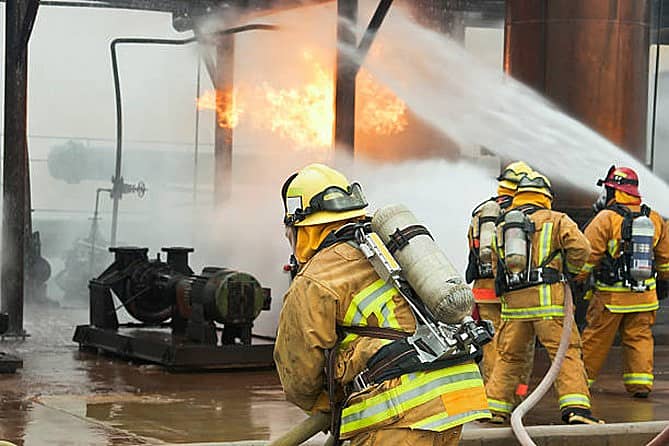National Preparedness Month is an annual event to raise awareness about the importance of preparing for disasters and emergencies. The Federal Emergency Management Agency (FEMA) has webpages dedicated to making sure you’re prepared at work and at home.
Resources for business include a site dedicated to the importance of developing Emergency Response Plans, also known as Emergency Action Plans (or Contingency Plans for Large Quantity Generators of hazardous waste). Per FEMA, every facility should develop and implement an emergency plan for protecting employees, visitors, contractors and anyone else in the facility.
These plans are required by OSHA in 29 CFR 1910.38 and 157. Depending on your facility’s location, there may also be state requirements for Emergency Action Plans such as in the Massachusetts Comprehensive Fire Safety Code 527 CMR 1.0, and the Massachusetts Department of Environmental Protection’s Hazardous Waste Regulation 310 CMR 30.000.
The plan developed for your site needs to be specific to the hazardous materials present and site-specific operations. It should include procedures for foreseeable hazards and threats. As recommended by FEMA, the plans should include procedures related to:
- Medical and fire emergencies
- Chemical, biological, and radiological spills and releases (depending on site hazards)
- Natural disasters (e.g., hurricanes, tornadoes, earthquakes)
- Workplace violence
- Bomb threats and suspicious packages
- Pandemic preparedness
Depending on site-specific operations, it may also be necessary to address other topics such as structural collapse, entrapment (e.g., from confined space entry), electrical emergencies, and transportation incidents.
As emphasized on FEMA’s Training website, training is essential to ensure that everyone knows what to do when there is an emergency. Would your employees know what to do if there was a fire in the building? Do they know who is in charge during an emergency? Do they know who is authorized to speak with the news media? Can they carry out their assigned responsibilities during an emergency?
As part of emergency response training, it’s a good practice to hold drills for the various emergency situations that could arise at your site. Fire drills are recommended at least annually. In addition, holding mock spill training is a great way to enforce proper spill response procedures. It’s nearly impossible to predict how individuals will respond in a true emergency situation, so providing an opportunity to practice is key to successful planning.
The Emergency Action Plan (or Contingency Plan) must be updated as the program changes. Any major changes, such as a newly designated Emergency Coordinator, or modification to the rally point, should be incorporated when they take place. Also consider less obvious modifications to the program including the introduction of new hazards to the facility, changes in chemical or biological use resulting in increased spill potential, or modifications to waste storage locations.
In addition, if any part of the written plan fails in an emergency situation, the plan must be reviewed and revised to reflect the appropriate response measures. Retraining on the plan is required by OSHA when employee’s responsibilities under the plan change and when the plan itself is changed.
For additional information on National Preparedness Month, or for assistance with developing or updating your facility’s Emergency Action Plan or Contingency Plan, please email us at [email protected].
This blog was written by Beth Graham, Associate Director of Quality, Research, and Training at Safety Partners.


